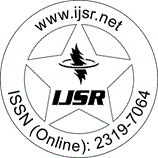Downloads: 26
United States | Computer Science and Information Technology | Volume 14 Issue 6, June 2025 | Pages: 571 - 577
Leveraging AI Models for Proactive Problem Detection, Investigation, and Root Cause Analysis in Enterprise IT Infrastructure
Abstract: In today's fast - paced digital landscape, the continuous availability and optimal performance of enterprise IT infrastructure are non - negotiable. Yet, managing the increasing complexity and dynamism of modern IT environments, which span networks, systems, applications, and cybersecurity, poses significant challenges for traditional monitoring solutions. These legacy systems, reliant on static, hard - coded thresholds and manual data correlation, often lead to reactive problem identification, overwhelming alert fatigue, and prolonged incident resolution times. This directly impacts business continuity, user experience, and operational efficiency, with many organizations still facing Mean Time To Resolve (MTTR) figures often exceeding several hours for critical incidents. This white paper outlines a transformative approach: leveraging Artificial Intelligence (AI) models to revolutionize the way IT problems are detected, investigated, and their root causes identified. By intelligently augmenting human capabilities in problem management, AI empowers organizations to build more resilient and efficient IT operations. Industry reports suggest that organizations adopting AIOps can see a reduction in Mean Time To Detect (MTTD) by as much as 25 - 40% and a decrease in MTTR by 30 - 50%. Our proposed framework highlights how AI models perform two critical functions: 1) Sophisticated Problem Detection: AI models use advanced machine learning mechanisms to learn "normal" operational behaviors from vast historical monitoring data. This enables them to detect subtle, yet significant, deviations and anomalies that static thresholds would miss. By continuously adapting to evolving IT environments, AI significantly reduces false positives and ensures that IT teams are alerted to genuinely impactful events, thereby reducing the Mean Time To Detect (MTTD) issues. 2) Intelligent Investigation and Root Cause Analysis: Once an anomaly is detected, specialized AI models come into play. These models excel at contextual data correlation, automatically analyzing relationships and dependencies across diverse IT monitoring datasets (e. g., network traffic, server metrics, application performance, security logs). Through this process, AI provides IT professionals with data - driven insights and a prioritized list of potential root causes, dramatically accelerating the investigation phase and significantly reducing the Mean Time To Resolve (MTTR) critical incidents. Ultimately, integrating AI into IT problem management translates into tangible benefits: enhanced operational efficiency, minimized downtime, improved service availability, and optimized resource utilization. This approach frees skilled IT personnel from tedious manual tasks, allowing them to focus on strategic initiatives and complex problem - solving. This re - allocation of effort can translate to operational cost savings of 15 - 20% annually in incident management. By embracing AI - driven insights, enterprises can shift from a reactive firefighting posture to a proactive, intelligent, and highly effective operational model, safeguarding their critical services and driving sustained business value.
Keywords: IT infrastructure management, digital operations, incident resolution, enterprise monitoring, MTTR reduction
How to Cite?: Manjunath Venkatram, "Leveraging AI Models for Proactive Problem Detection, Investigation, and Root Cause Analysis in Enterprise IT Infrastructure", Volume 14 Issue 6, June 2025, International Journal of Science and Research (IJSR), Pages: 571-577, https://www.ijsr.net/getabstract.php?paperid=SR25607232609, DOI: https://dx.doi.org/10.21275/SR25607232609
Rate This Article! View 1 Comments
